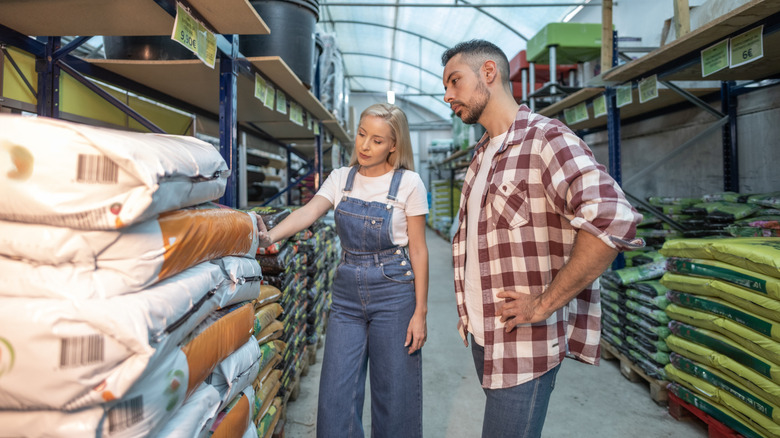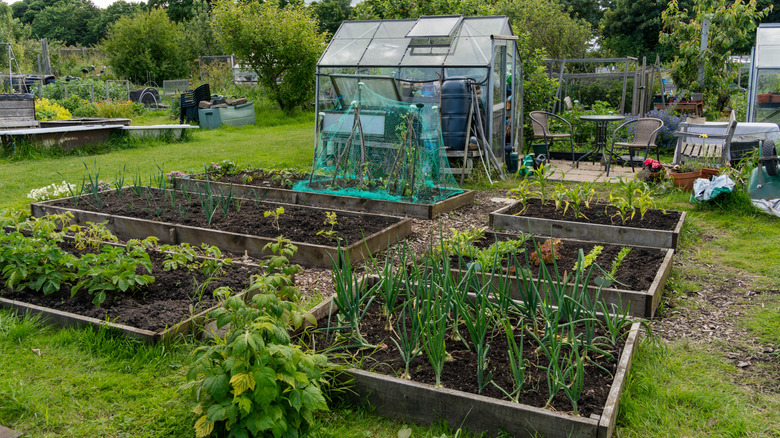What To Avoid When Choosing Soil For Raised Garden Beds
So, you've built your raised garden beds and selected the plants you'd like to grow — if you haven't chosen your veggies yet, cucumbers and radishes are a couple of plants that are perfect for a raised garden bed. Maybe you even followed the ultimate guide to starting a raised bed garden. The next step is to choose the soil that will fill them. While it may be tempting to head to your local garden or hardware store and grab whatever bag of soil you see first, choosing the right soil — and knowing what to avoid — for your raised garden beds is key to a successful growing season.
The number one mistake to avoid when selecting soil for your raised garden beds is defaulting to purchasing the cheapest soil on the shelf. While topsoil – the soil you should fill your raised beds with – can be pricey, saving a few dollars at the store could make for a less bountiful harvest. Bags of dirt labeled "garden soil" are often a mixture of topsoil and organic matter, too much of which can actually be bad for your garden. Organic matter will decompose over time. With a soil mixture high in organic matter, you'll need to refill your beds more quickly than with one that has a higher percentage of topsoil.
Choosing the right soil for your raised garden beds
Ultimately, you'll want to select a bagged soil that has the highest percentage of topsoil possible. Look at the bag closely — make sure your bagged soil mixture actually says the word "soil" on it. You'll also want to keep an eye out for what else is inside your bagged soil. Garden soil is often filled with soil amendments, but not all amendments are created equal. Peat moss, for example, is a very common amendment added to bagged soils. It's great for increasing water retention — but it's terrible for the environment, which is just one reason you shouldn't use peat moss in your garden. Coco coir is a good alternative.
It's also a good idea to purchase a single bag of topsoil or garden soil, open it, and inspect it before committing to buying several bags to fill your raised beds, especially if the contents of the soil mixture aren't explicitly stated on the bag. If you can't find bagged soil with a satisfactory amount of topsoil in it, consider using native soil — the soil from your yard — in your raised beds. Obviously, if there is chemical contamination or if your soil is full of clay or rocks, this isn't an option, but native topsoil contains valuable minerals and nutrients that are great for plants in raised beds.

